Upon seeing it, perhaps one is transported to those medieval castles in fairy tales, or in films or series where it has been used, so imposing, magical and beautiful. Or, perhaps we imagine it as history suggests, a witness to battles, of royal weddings or merely a palace of intrigues, this is the “Alcázar” of Segovia.
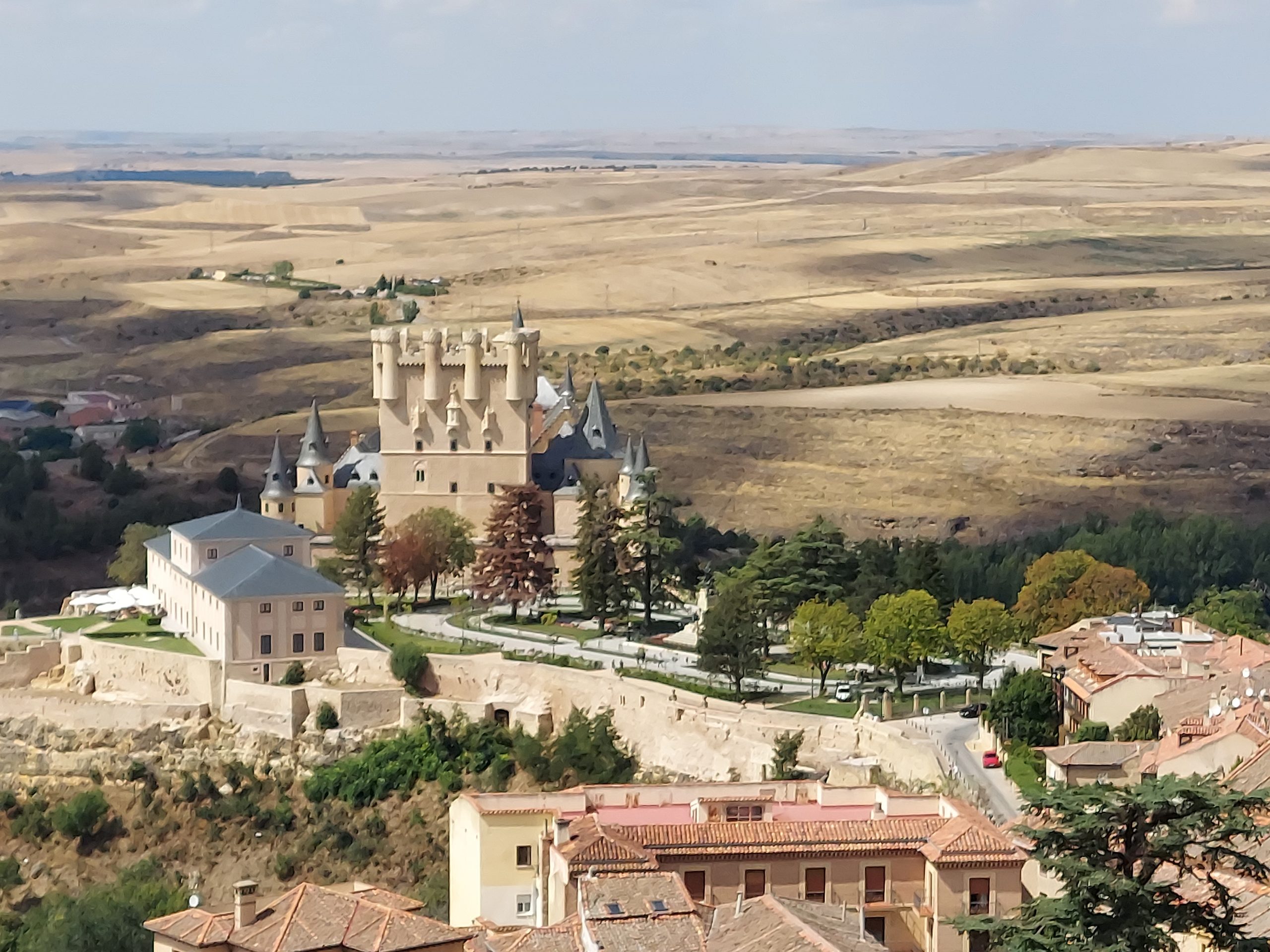
Its construction dates back to the early twelfth century, the “Alcázar” of Segovia is probably one of the most famous medieval castles in the world and the most visited monument in Spain. Its imposing structure rises majestically over the Eresma valley and is a symbol of the Old City of Segovia, declared a UNESCO World Heritage Site in 1985.
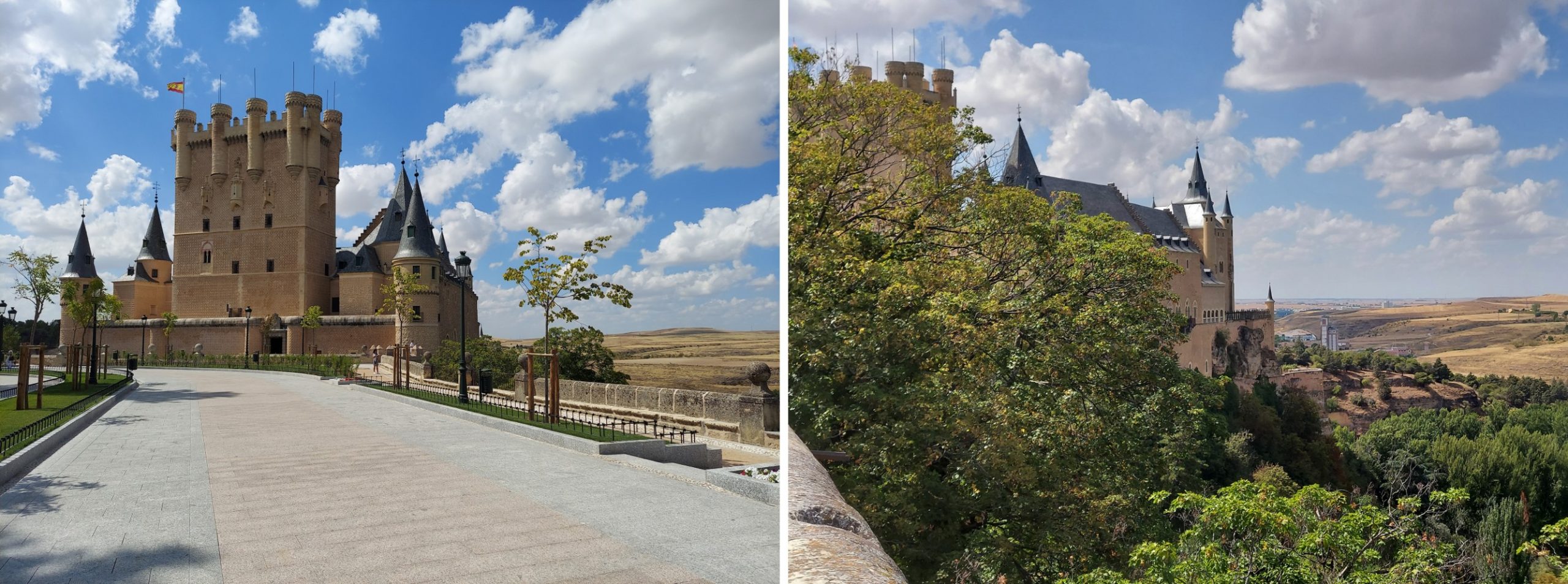
Palace and fortress of the Kings of Castile, the design of the “Alcázar” of Segovia and its dimensions reflect the splendor of the Court during the Middle Ages. It is considered a unique example in the history of Spanish and European architecture, where it is both a castle and a royal residence. It is known in 1135 with the appellative “alcáçar”, when King Alfonso VII was the emperor. In fact, the word “alcázar” is derived from the Arabic “alqasr”, and defines a fortified royal residence.
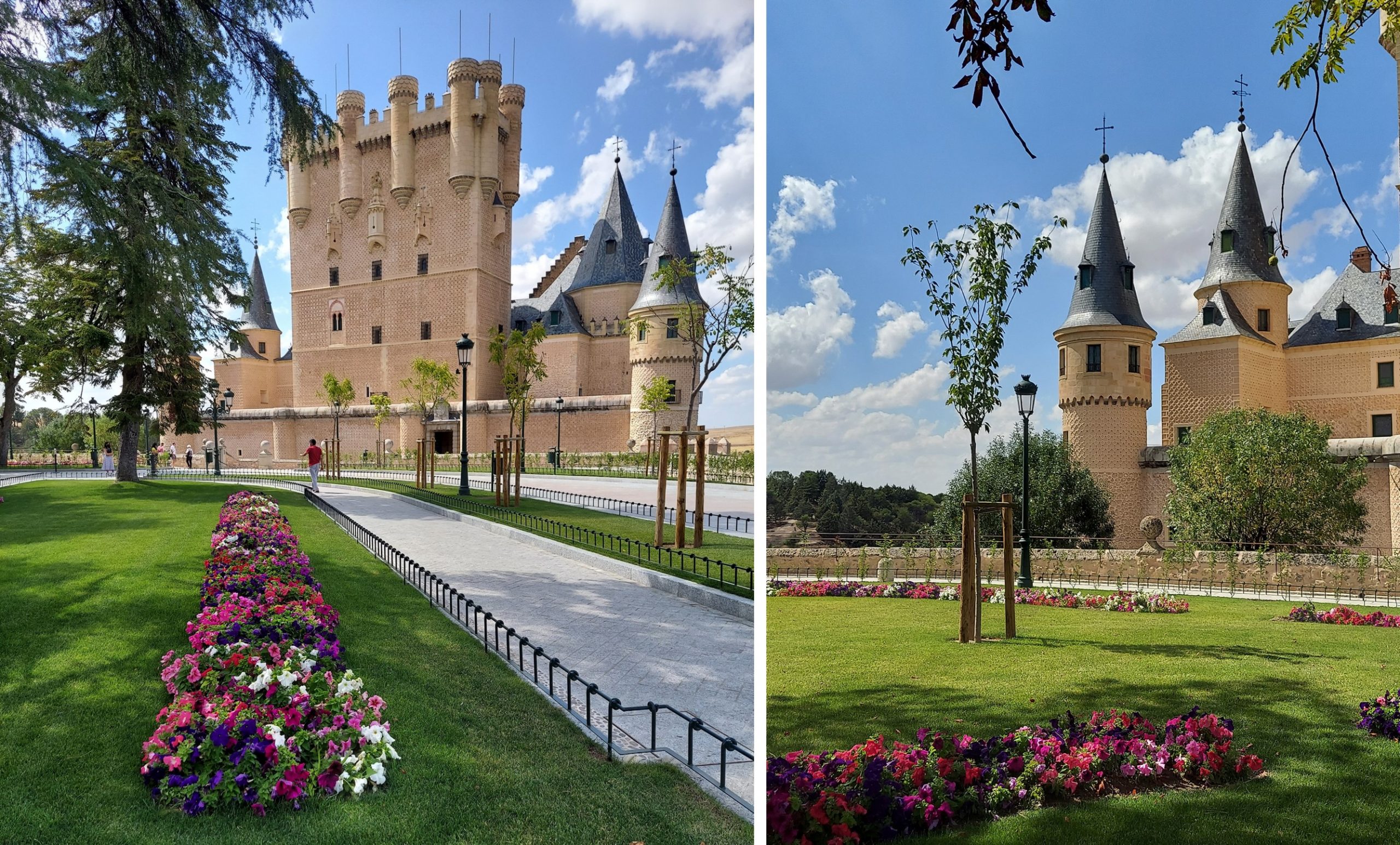
It is probable that the “Alcázar” of Segovia existed since the age of Roman domination, given that granite ashlars similar to those of the Aqueduct have been found there. It has been a medieval fortress, royal palace, custodian of the royal treasury, the archives of the kingdom and the royal armory, it was a state prison, this being its function, almost exclusively, during the reigns of Philip IV and Charles II. It was also used as the Royal Artillery College and General Military Archive.
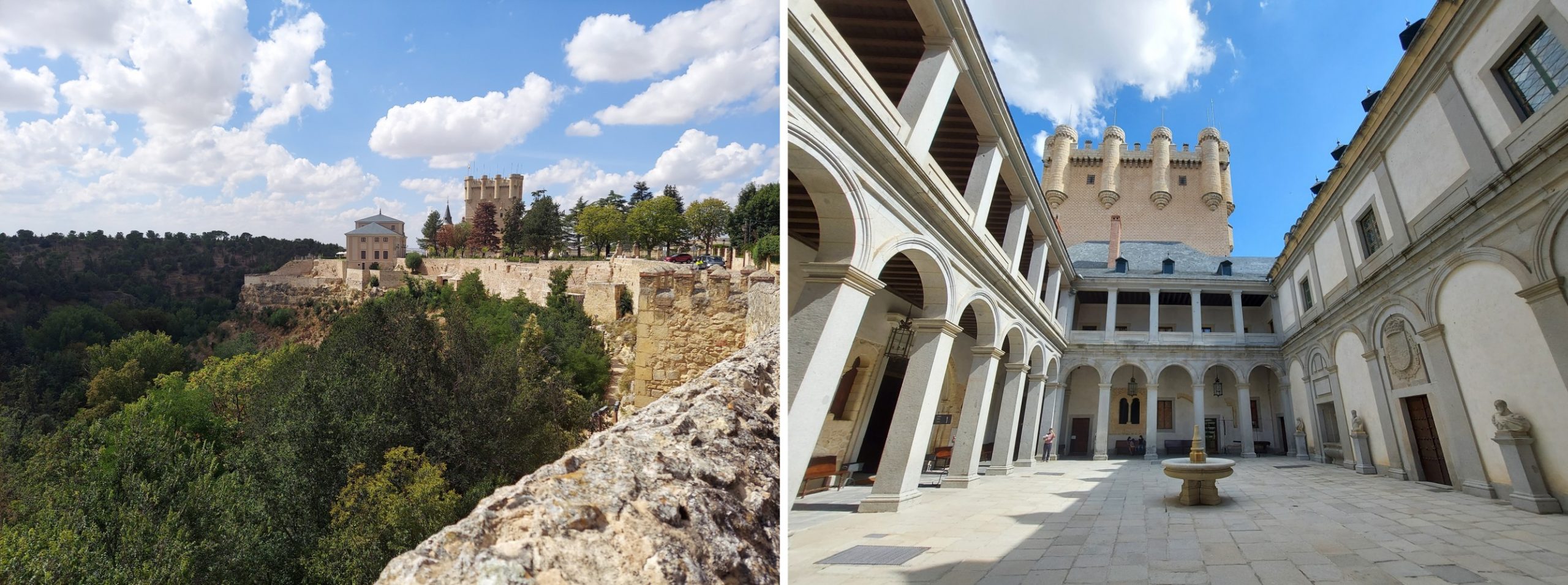
The building has a perimeter of 728 meters and is located on a large rock. Its floor plan is very irregular and adapts to the hill on which it stands. The distribution of the castle is divided into two areas: the exterior, with a Herrerian courtyard, moat, drawbridge and the keep, and the interior rooms that include a chapel and several noble rooms (the Throne room, the Galley room, the Pineapple room, the Kings’ room and others) that can be visited nowaday.
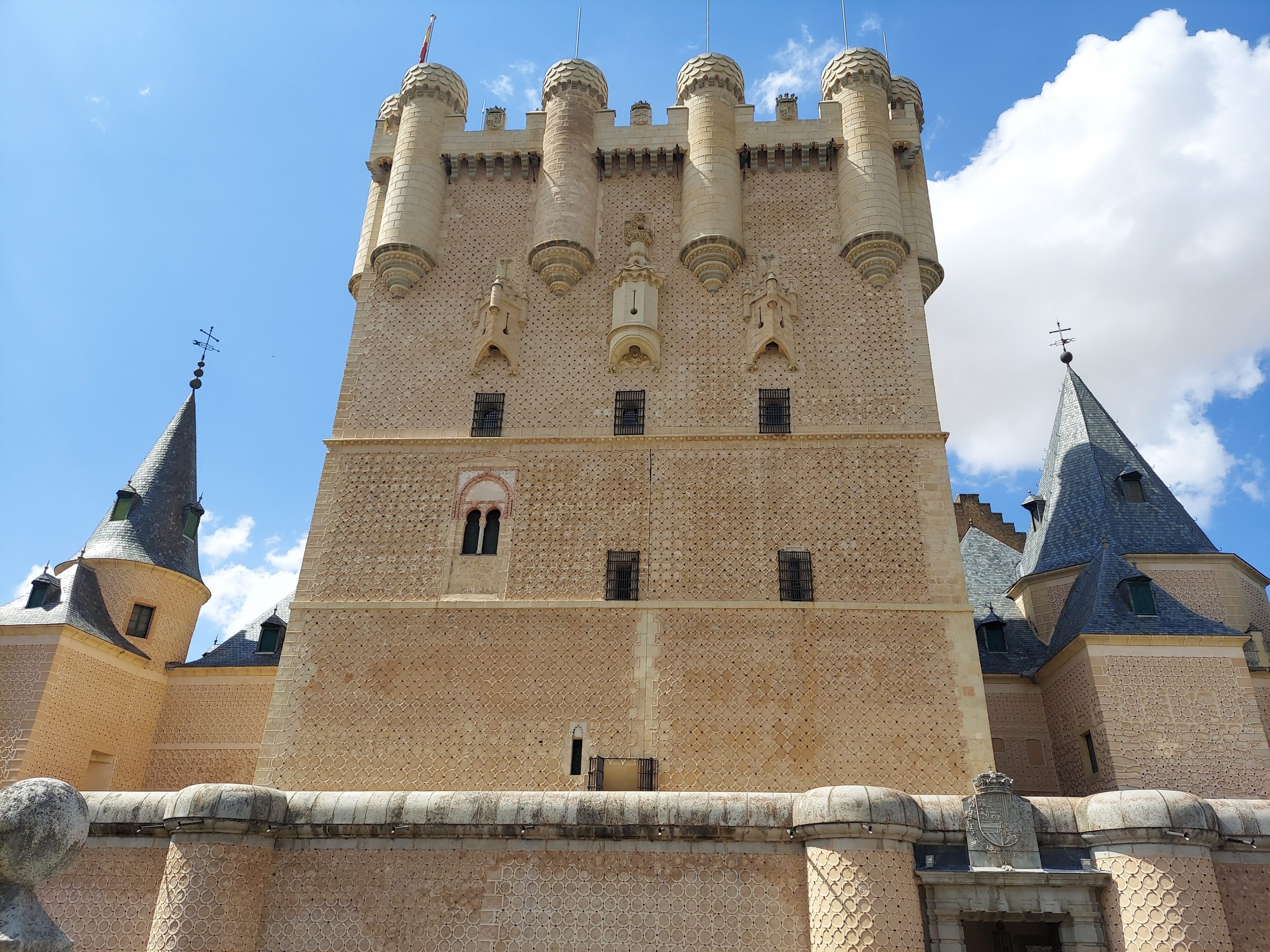
The “Torre del Homenaje”, the highest tower of the “Alcázar”, stands out in a special way, square with its five towers and topped with battlements, some of them decorated with the coats of arms of Castile. It was built between 1440 and 1465 during the reign of King Juan II. It was precisely during the reigns of John II (1406-1454) and his son Henry IV (1454-1474) when the “Alcázar” reached its peak, both for the role played politically, as well as for the active cultural life that took place in it and its splendid decoration.
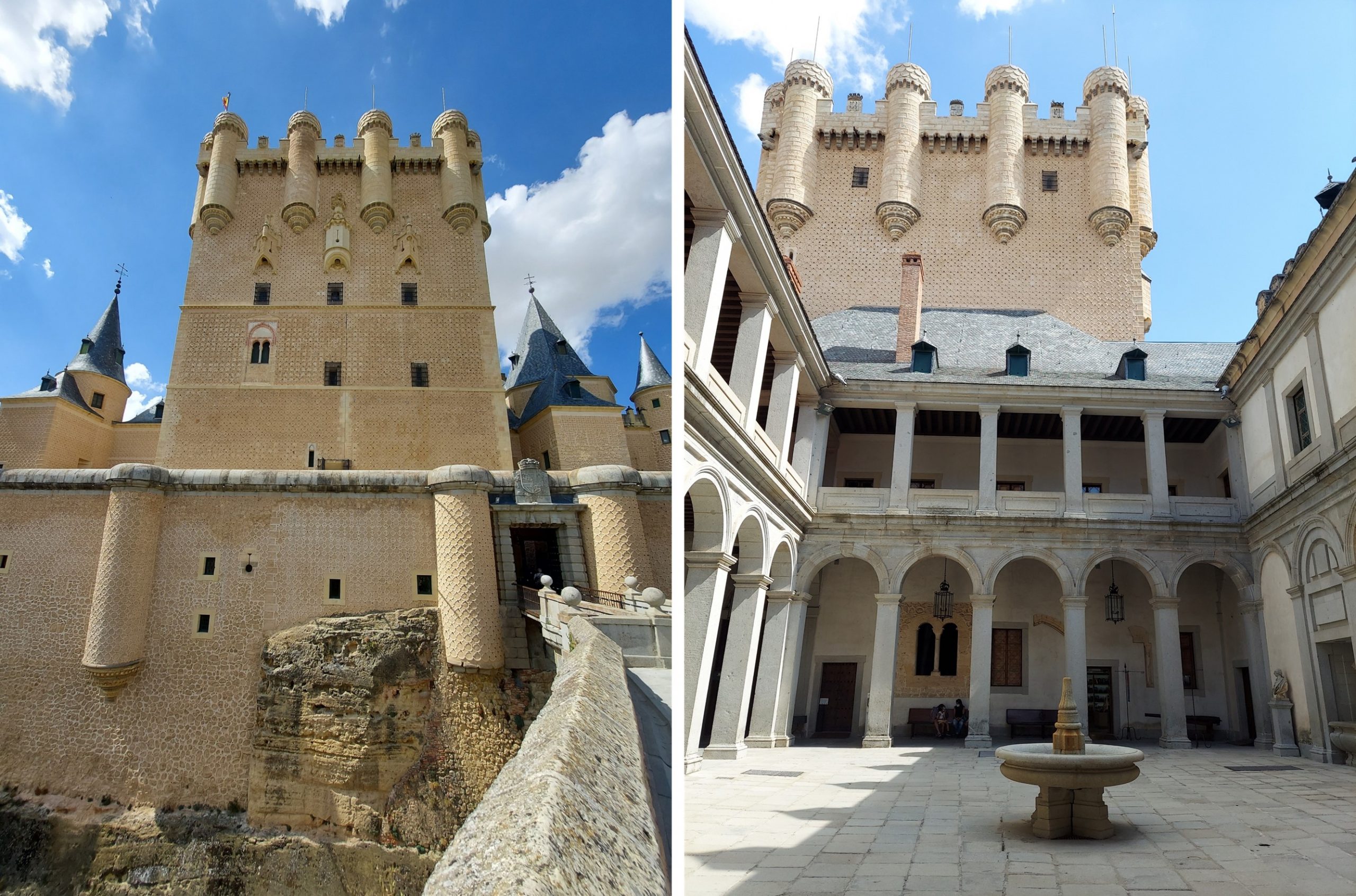
As it usually occured in those times (and in these times too), the “Torre del Homenaje” suffered a fire in the year 1681, destroying its roof. Two centuries after its restoration, another fire occurred in 1862. In a few hours on the morning of March 6, everything collapsed, leaving in ruins eight centuries of history of the “Alcázar”. Twenty years after the fire, the restoration began and lasted 14 years.
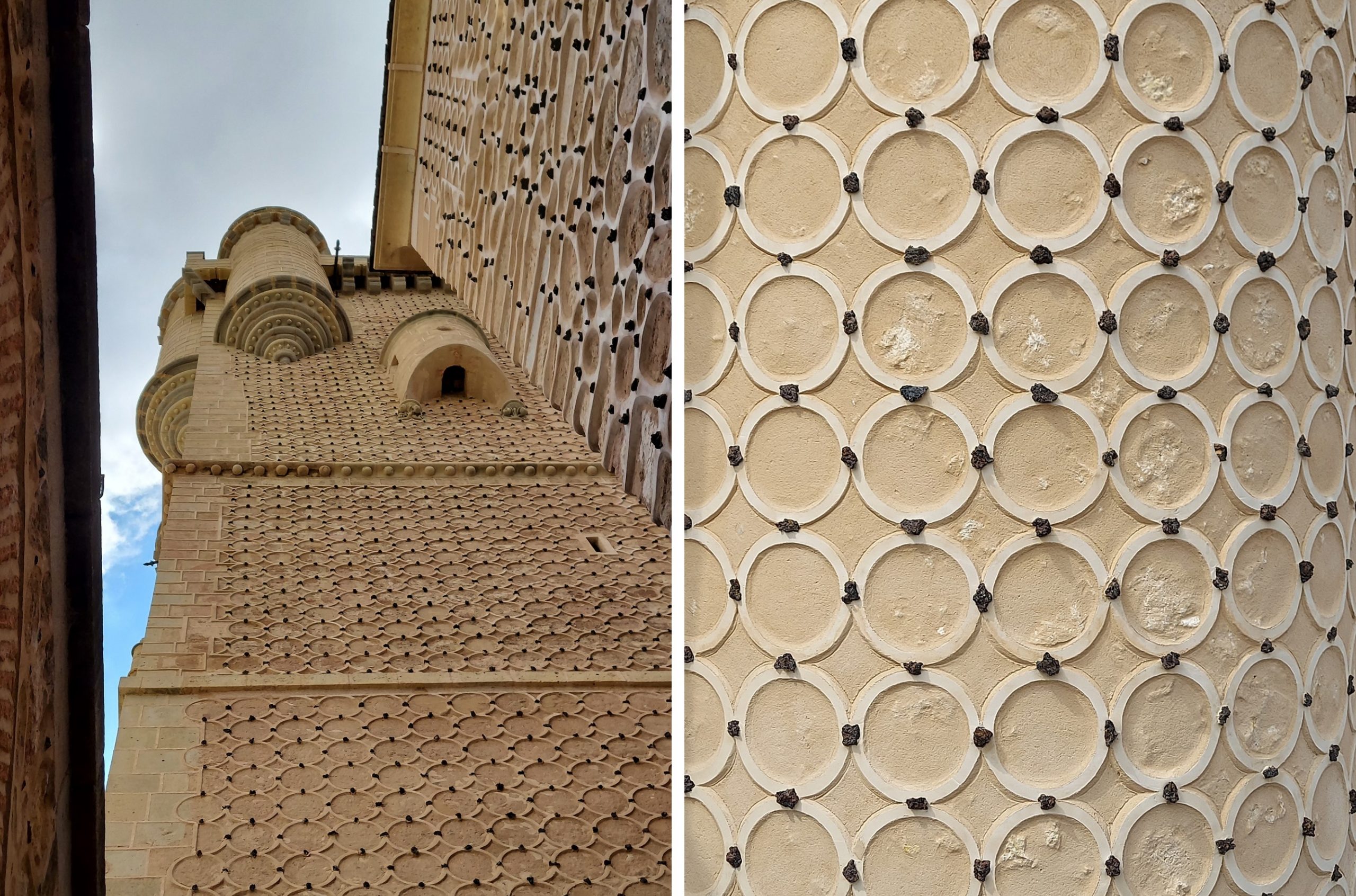
The “Torre del Homenaje” is considered a great example of Spanish Gothic-civil architecture. It has a height of 80 meters, it has twelve turrets adorning its volume, and on its surface the architectural ornamental technique of sgraffito, which is a type of engraving used to decorate the walls, was performed. This tower originally served as a weapons room, used as a state prison and was a symbol of the absolute power of the Hispanic monarchy. The top of the “Torre del Homenaje” can be reached by climbing 152 steps of a spiral staircase.
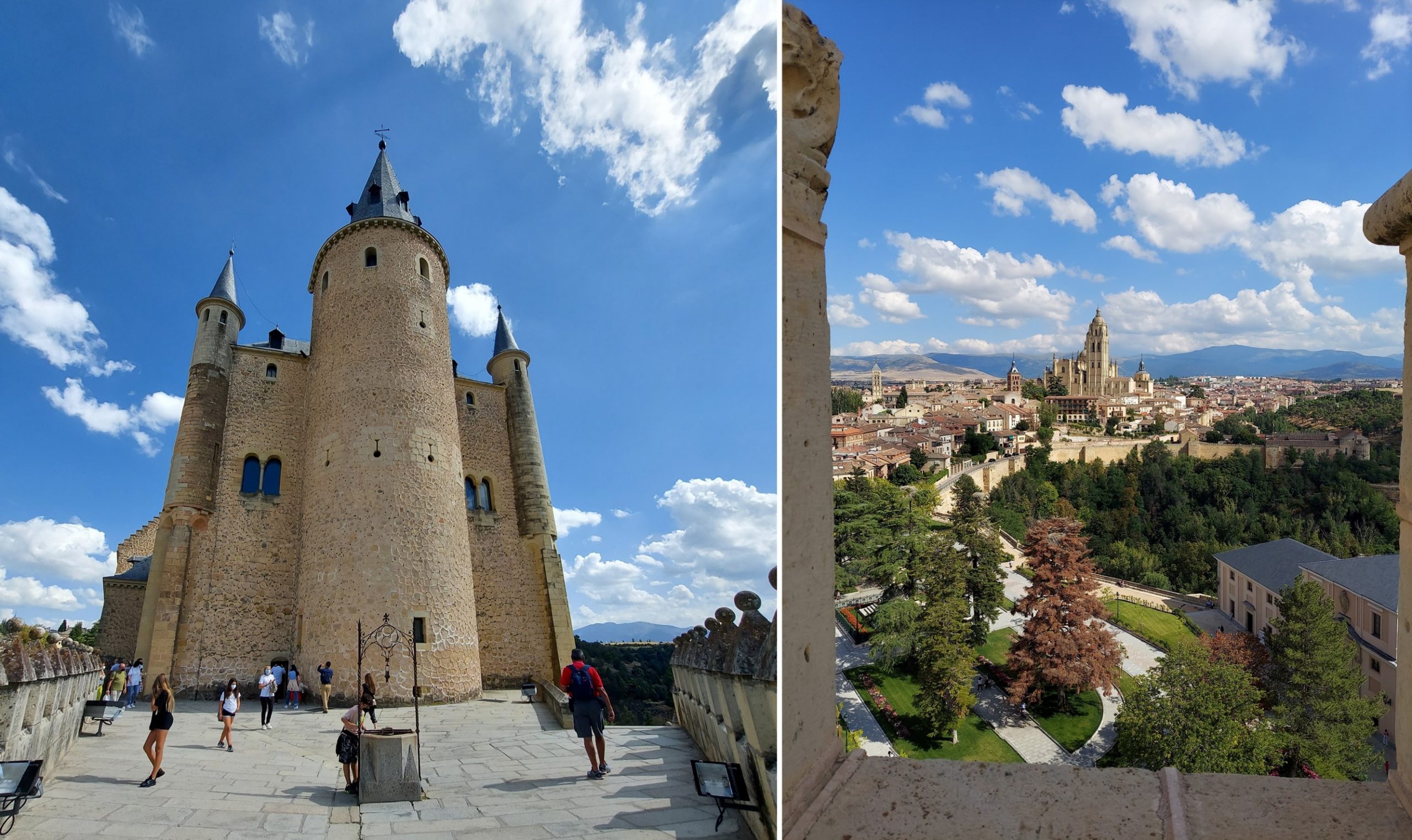
Upon descending from the “Torre del Homenaje”, one can access the “Terraza de Moros” which is located above the entrance door to the monument. It allows us to have access to fantastic views of the “Plazuela Reina Victoria Eugenia”, the moat of the “Alcázar” and the landscapes on both sides of the building.
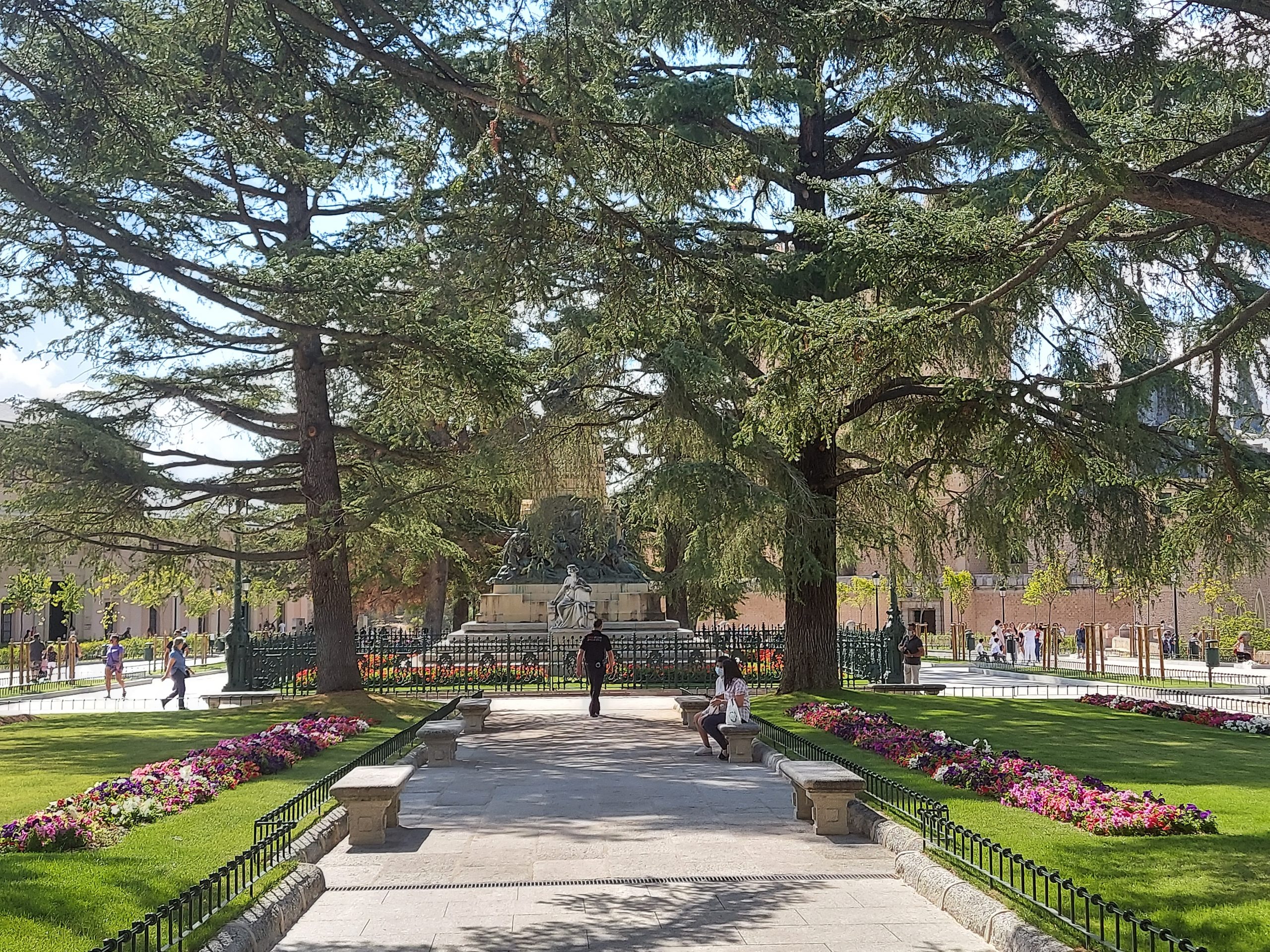
About the “Plazuela la Reina Victoria Eugenia”, named after the wife of Alfonso XIII, although it is known in the city simply as “la plazuela del Alcázar”. In fact, it is by crossing this square that you reach the entrance to the “Alcázar” and it is one of the favorite spots for strolling among Segovians. Under the floor of the “Alcázar” square is a good part of the history of Segovia, such as the remains of its first cathedral, a victim of the struggles between Comuneros and Imperiales.

One of the historical events where the “Alcázar” of Segovia was the protagonist and marked the history of Spain, was the proclamation of Isabella of Castile in 1474. One of the rooms commemorates this event with a painting by the artist Muñoz de Pablos.
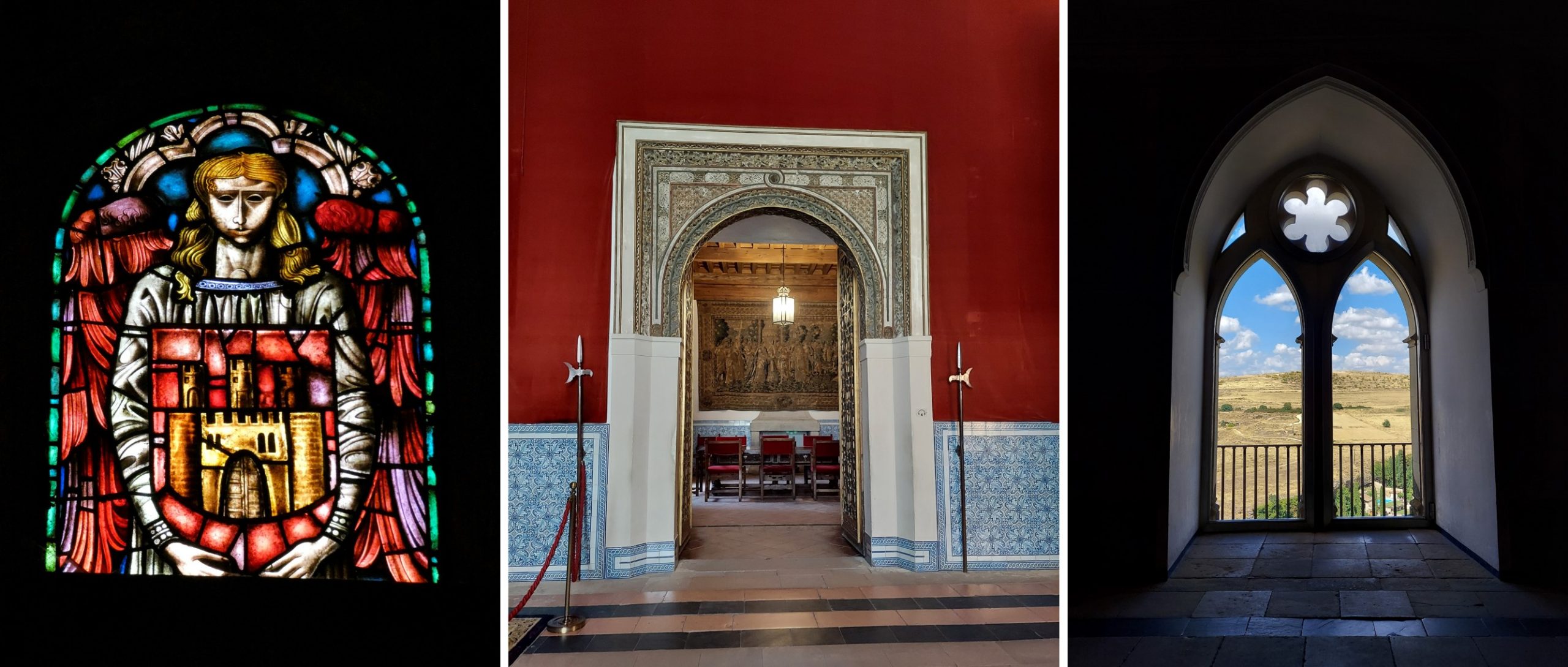
Inside the “Alcázar” of Segovia, the halls and rooms were decorated with great luxury and beauty by Mudejar painters and artists. We can find beautifully executed stained glass windows, richly decorated coffered ceilings and windows that make us think we are in a fairy tale.
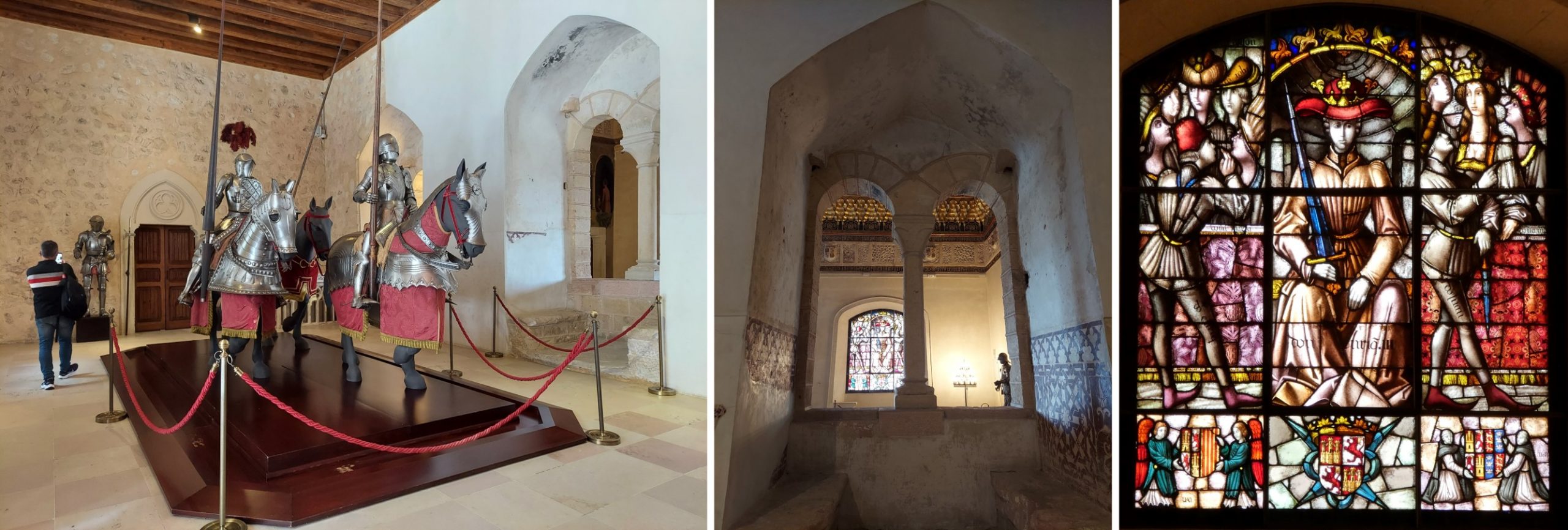
The construction of the Hall of the Old Palace corresponds to the reign of Alfonso VIII. It preserves the windows that illuminated the palace, since the wall where they are located was the outer wall of the old palace. The Mudejar style baseboards between the windows come from a 13th century house in the nearby neighborhood of the Canonjías. The decoration was completed with a set of armor from the 15th century.
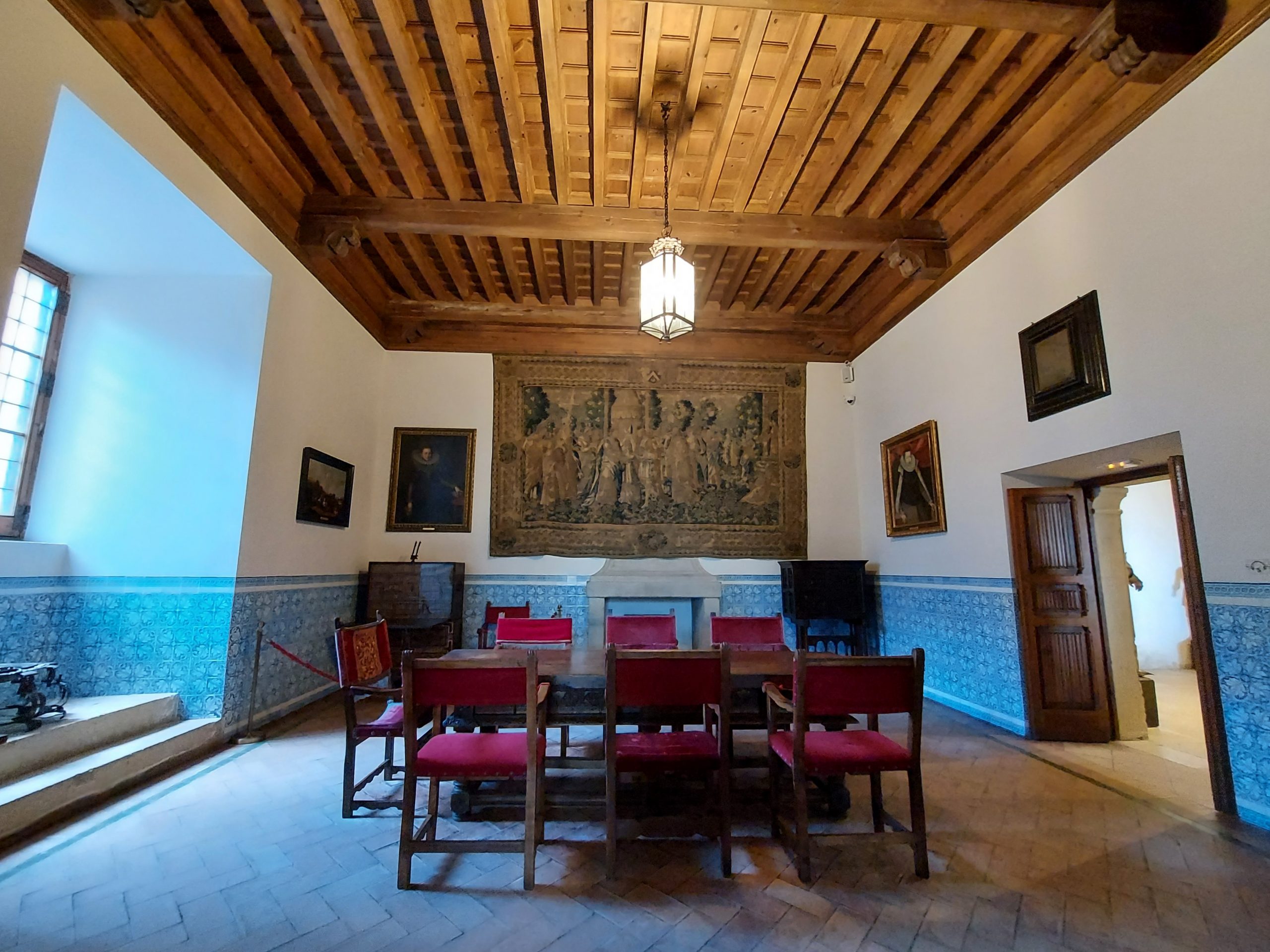
The “Sala de la Chimenea” (Chimney Room) corresponds to the layout of the Alcazar during the reign of Philip II. Its furniture is from the 16th century and on the walls one can contemplate paintings such as a portrait of Philip II and another of Philip III and a Flemish tapestry from the 16th century, among other elements.
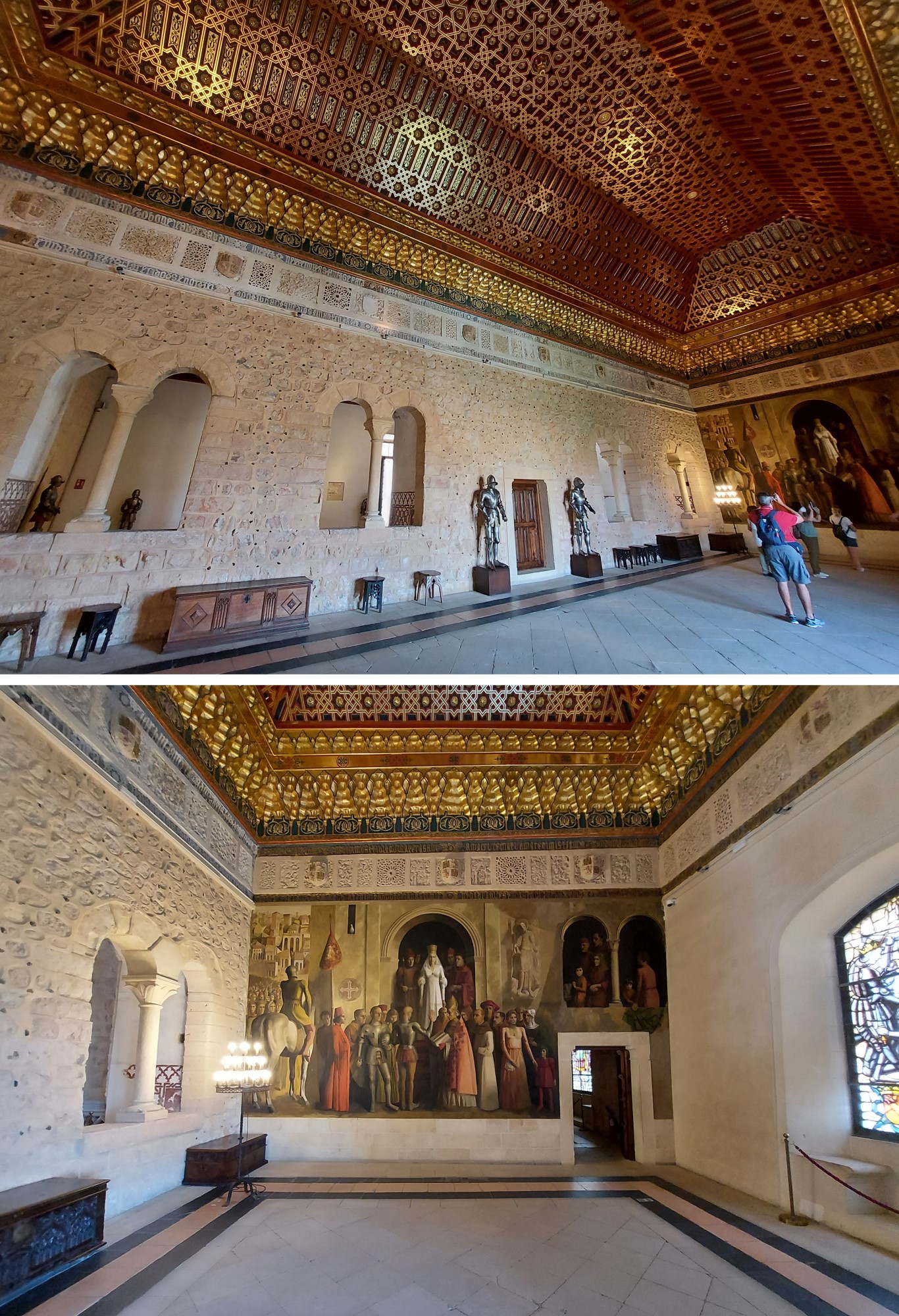
In the “Sala de la Galera”, in the background, is the mural representing the coronation of Queen Isabella the Catholic as Queen of Castile and Leon. It is represented in the church of “San Miguel de Segovia”, the work of the aforementioned Muñoz de Pablos. Its coffered ceiling has been reconstructed and is a real beauty.

The Throne Room, with the motto of the Catholic Monarchs “tanto monta” on the front of the canopy. It has a very striking Mudejar ceiling. On the walls are portraits of the kings themselves, which are part of the iconography of kings commissioned by Queen Isabella II. The stained glass window depicts Henry IV of Castile and is the work of the Segovian artist Carlos Muñoz de Pablos, who is also the author of the stained glass windows that can be seen in the other rooms.
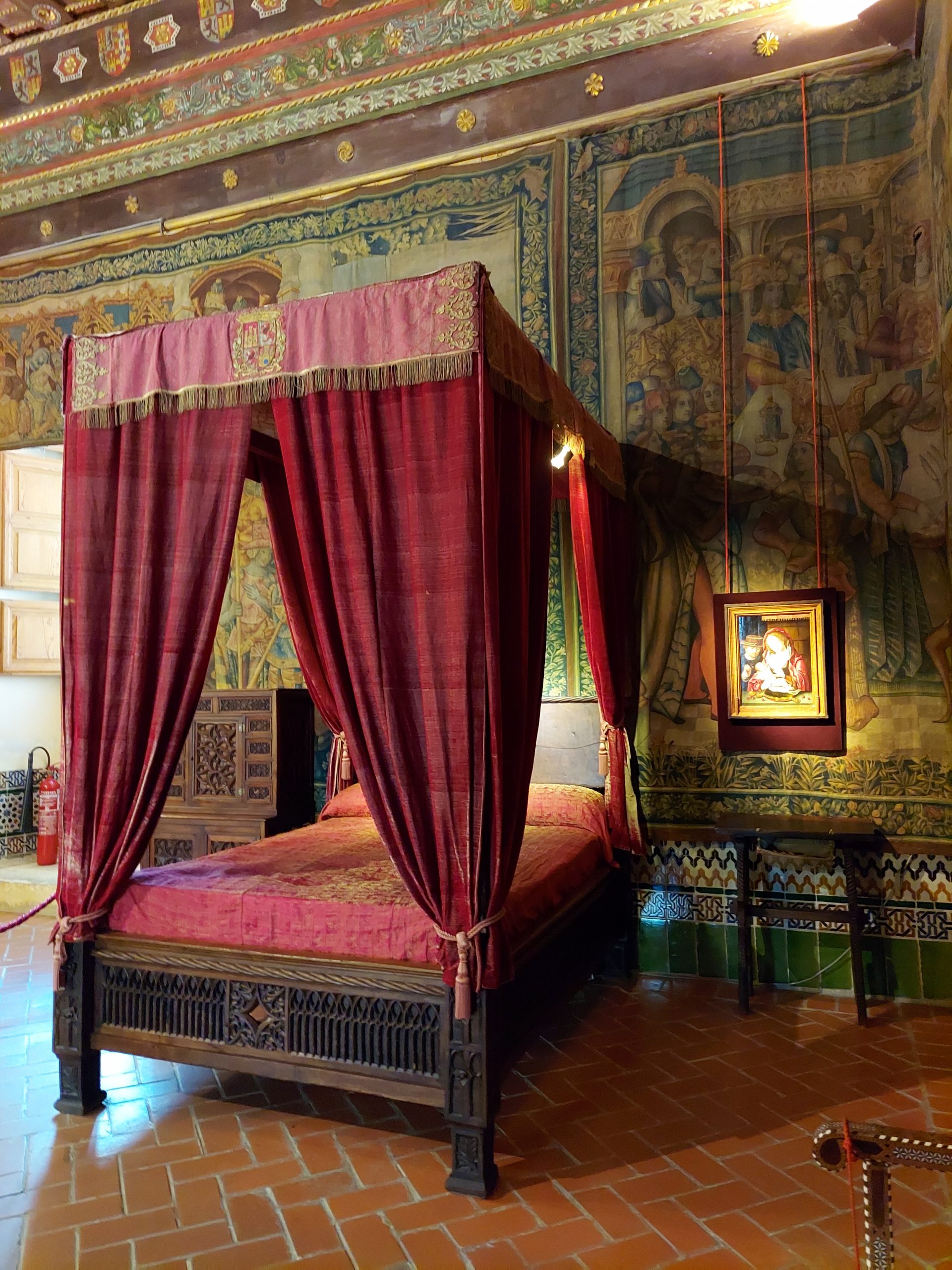
On the walls of the Royal Chamber can be seen scenes of the family life of the Catholic Monarchs. The bed has a brocade cover woven in gold.
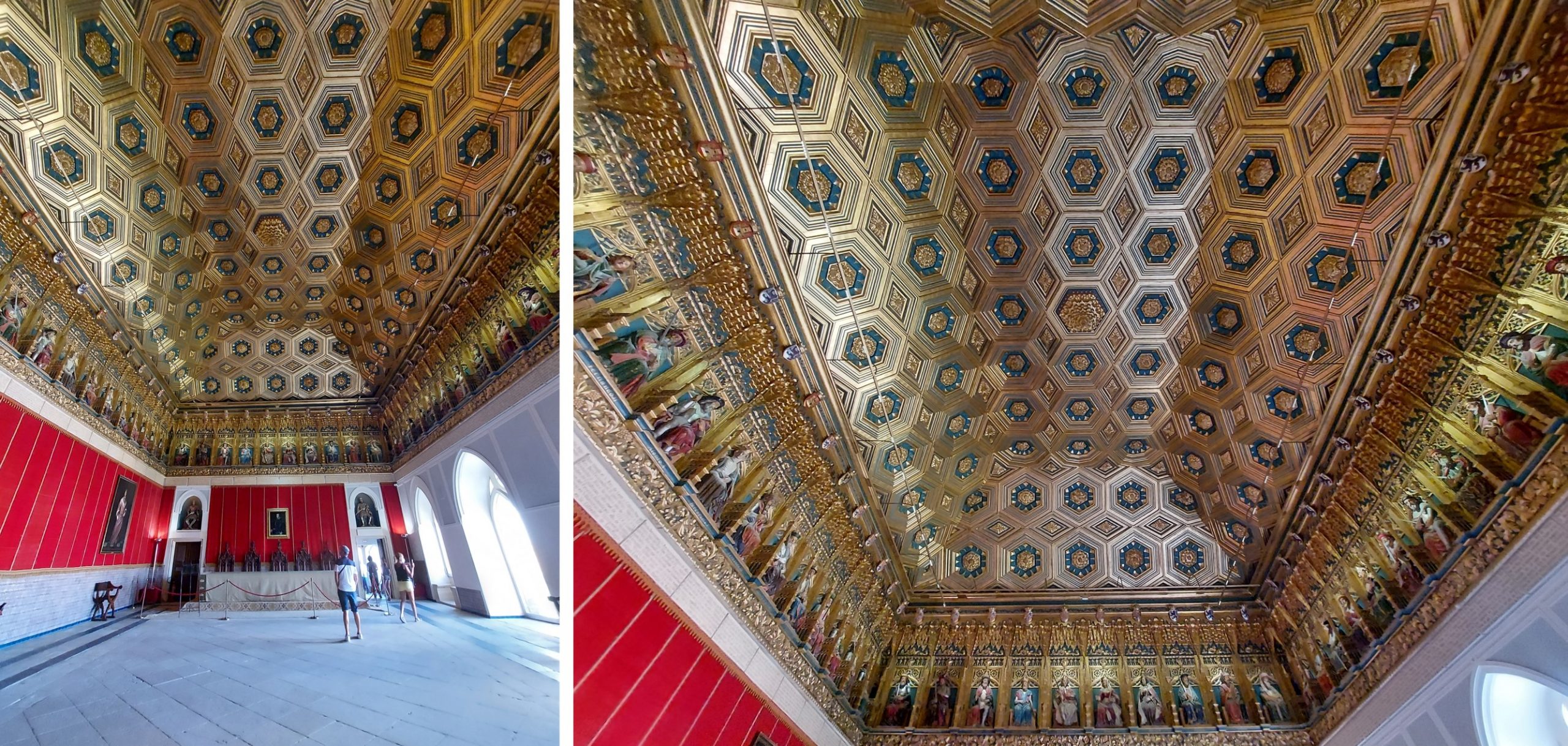
The Hall of the Kings is the most outstanding of the spaces we visited. It has a coffered ceiling of extraordinary hexagons and golden rhombuses, as well as an original frieze in which fifty-two polychrome and seated images represent the Kings and Queens of Asturias, Leon and Castile from “Don Pelayo” to “Juana la Loca”. An extraordinary work.
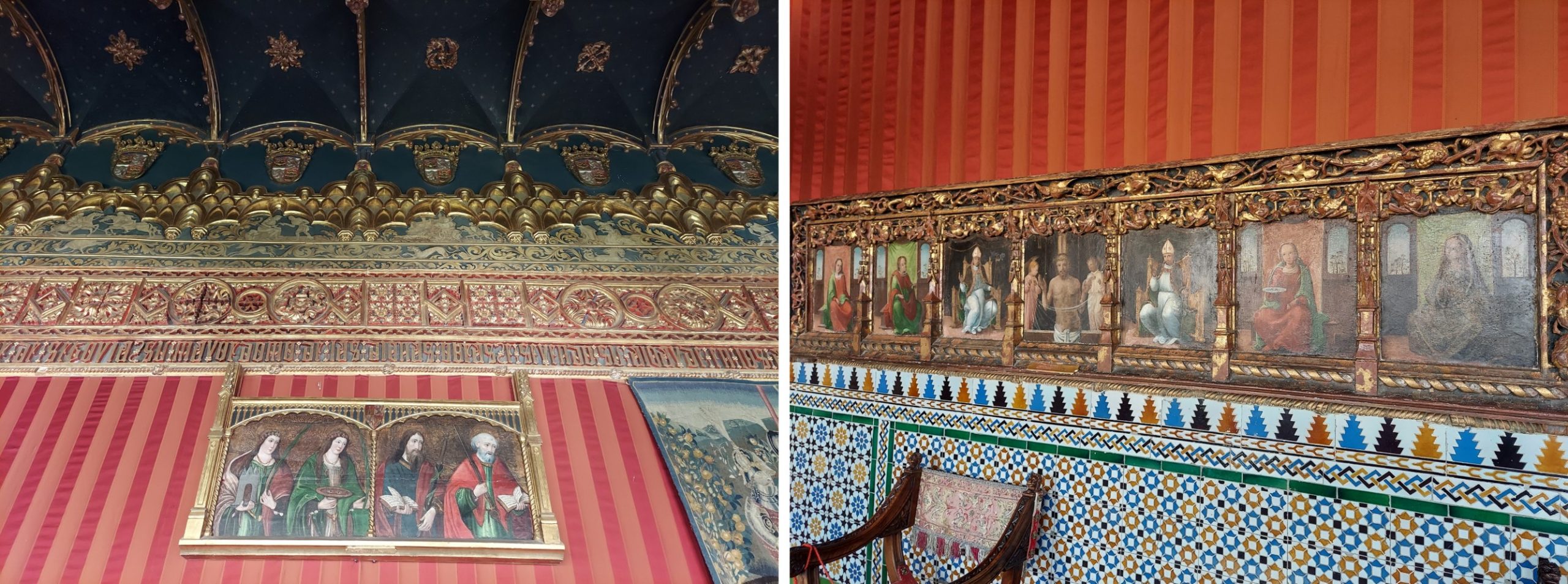
The Cord Room owes its name to the fact that it is surrounded on the walls by a long golden cord. It represents the Franciscan cord, a penance of Alfonso X for his excessive pride.
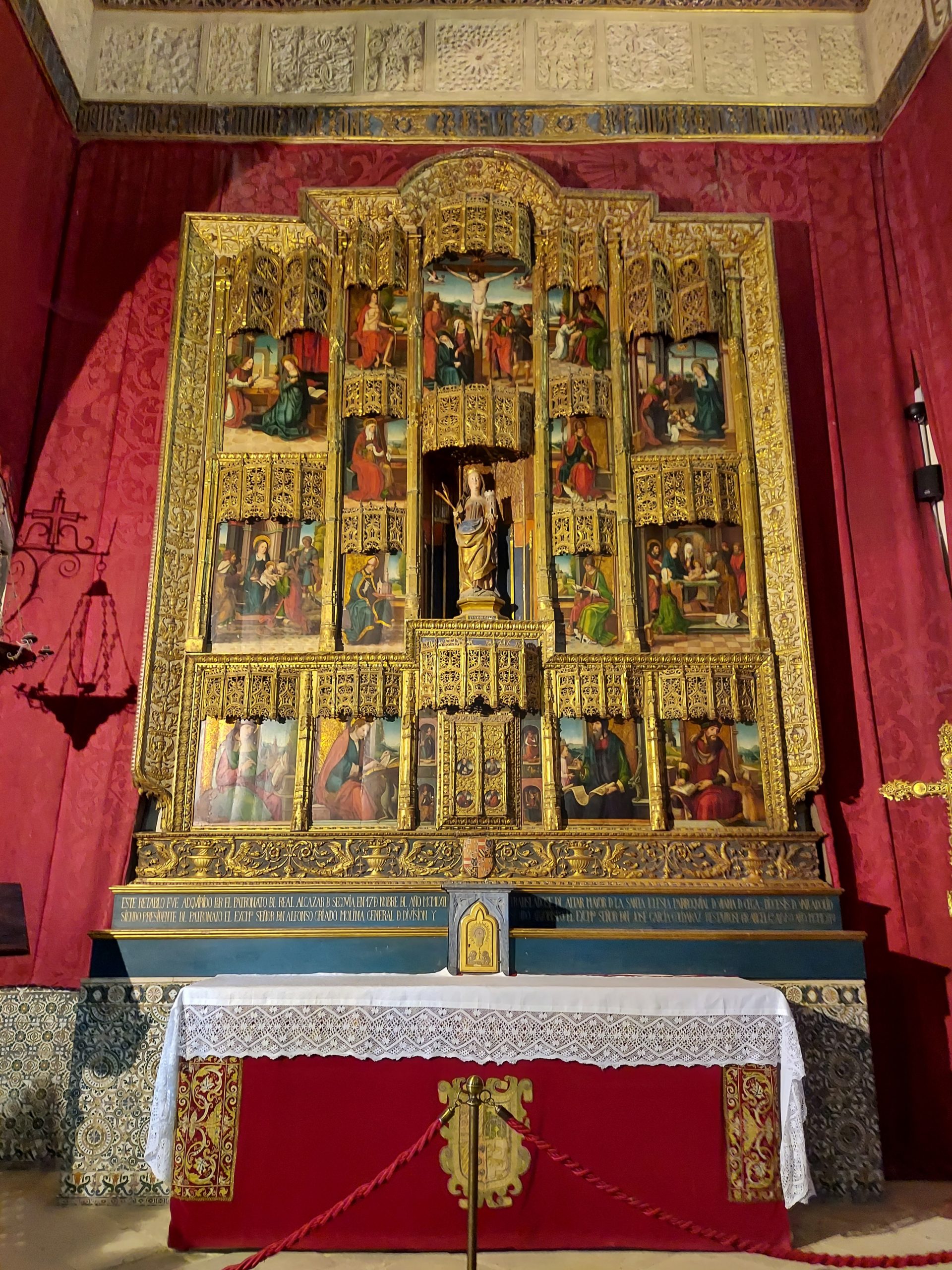
There is a chapel in the cordon room from which the King or Queen listened to mass. It is here that there is an altarpiece of the Castilian school from the first quarter of the 16th century and another dedicated to St. James the Apostle, as well as the Adoration of the Kings, painted in 1600.
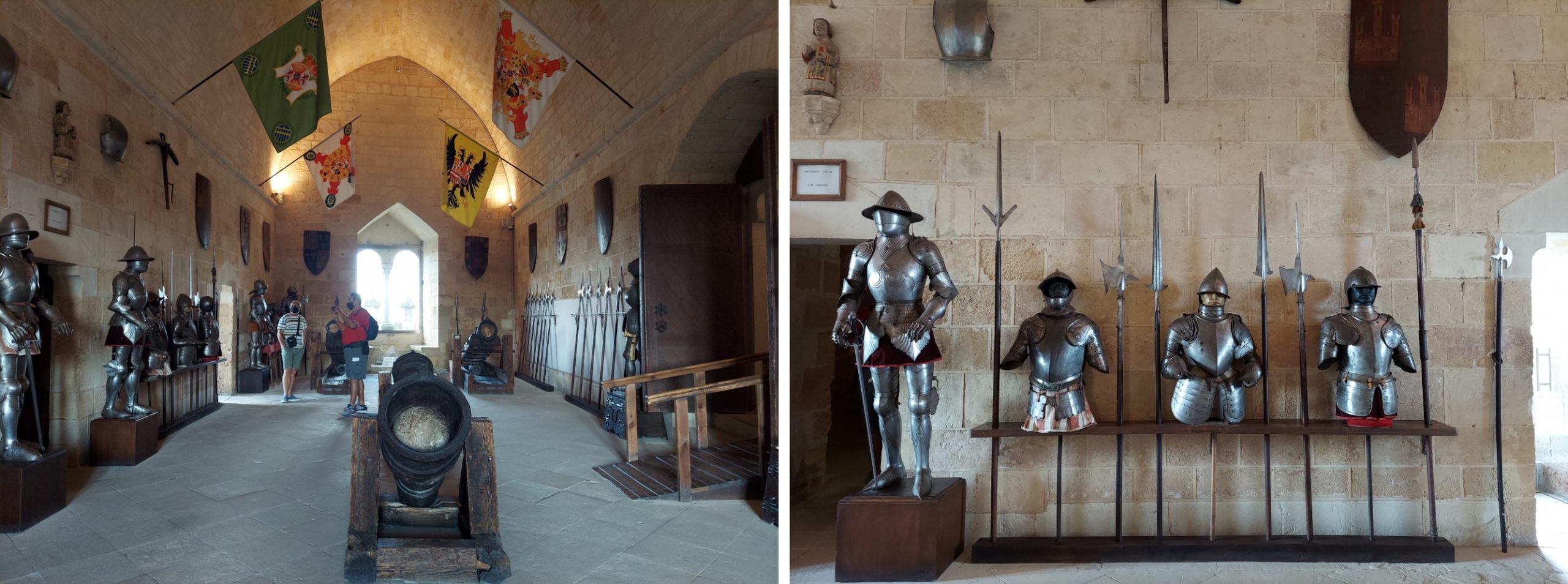
One of the last rooms we visited in the Royal “Alcázar” of Segovia was the Armory Hall. There is a good display of armor, swords, shields and cannons.
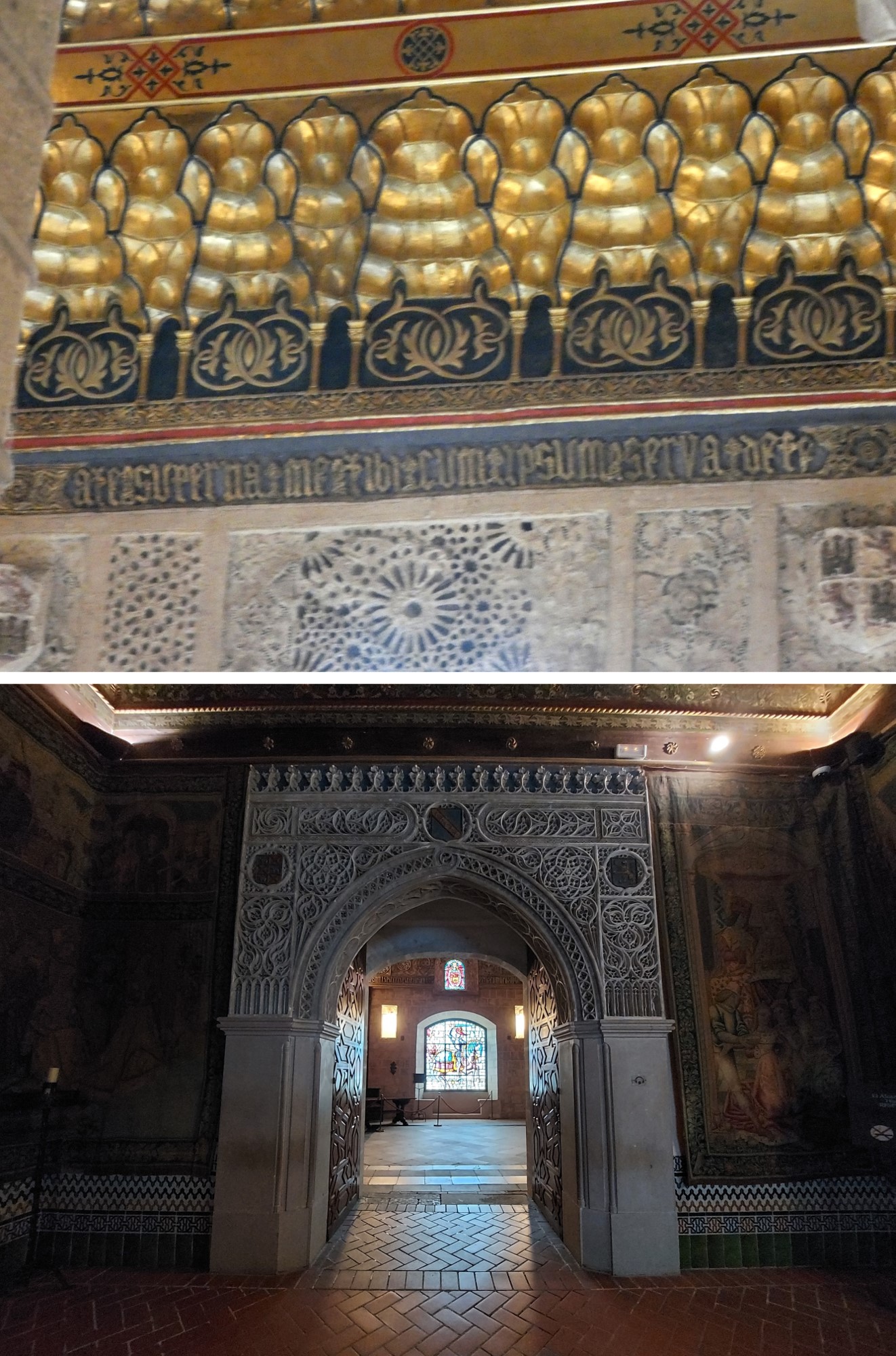
All these rooms were generally restored after the devastating fire of 1862, although the medieval plasterwork friezes were preserved. Armor, furniture and tapestries are authentic and correspond to various periods of the monument, castle-palace of kings of Castile and Leon. In 1898 the General Military Archive was installed on the second floor of the building, which currently continues in the “Alcázar”. It also houses a Museum of Arms and the oldest historical archive of the Spanish Armed Forces.
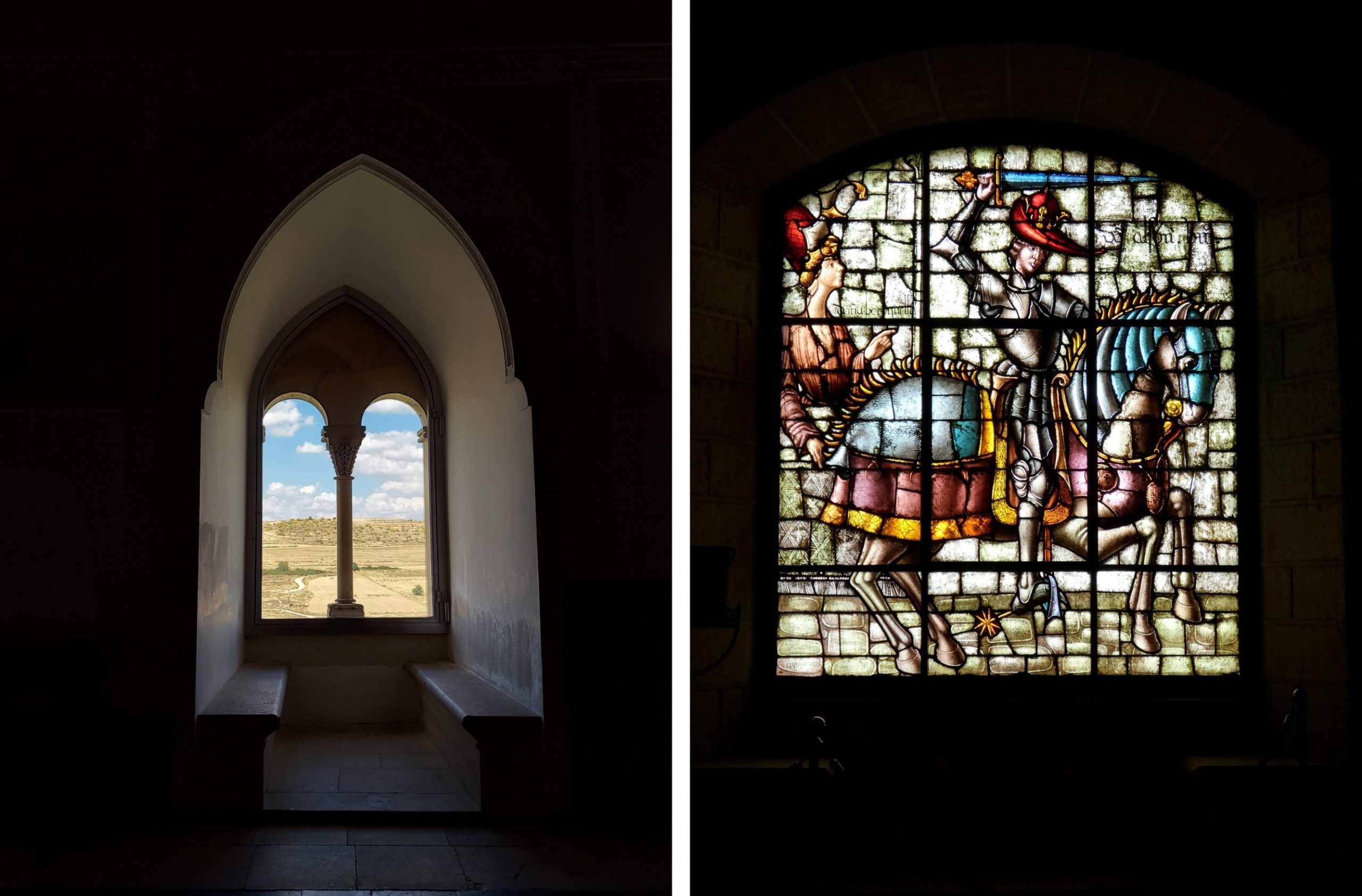
In 1931 it was declared a Historic-Artistic Monument. In 1953 the “Patronato del Alcázar” was created, being responsible for the museum that can be visited inside. This Board is responsible for the conservation, entertainment and artistic protection of the monument.

The “Alcázar” of Segovia is today one of the monuments in Europe that generates great interest in being visited. Perhaps, the magic that generates its beauty and monumentality is reason enough to approach and validate that it is real.
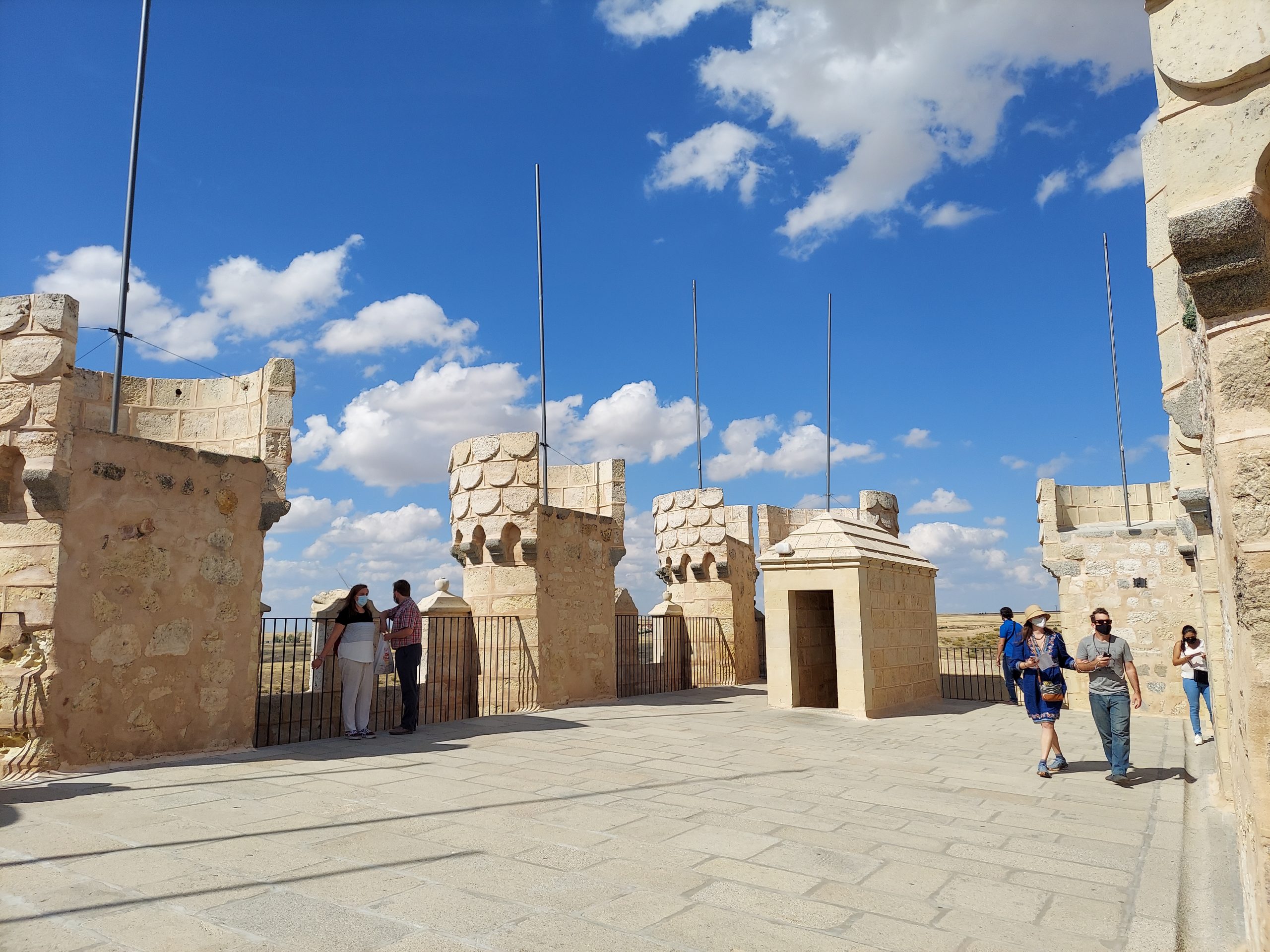
Resources:
- https://www.alcazardesegovia.com/
- https://es.wikipedia.org/wiki/Alc%C3%A1zar_de_Segovia
- https://www.segoviaunbuenplan.com/monumentos-segovia/alcazar/

